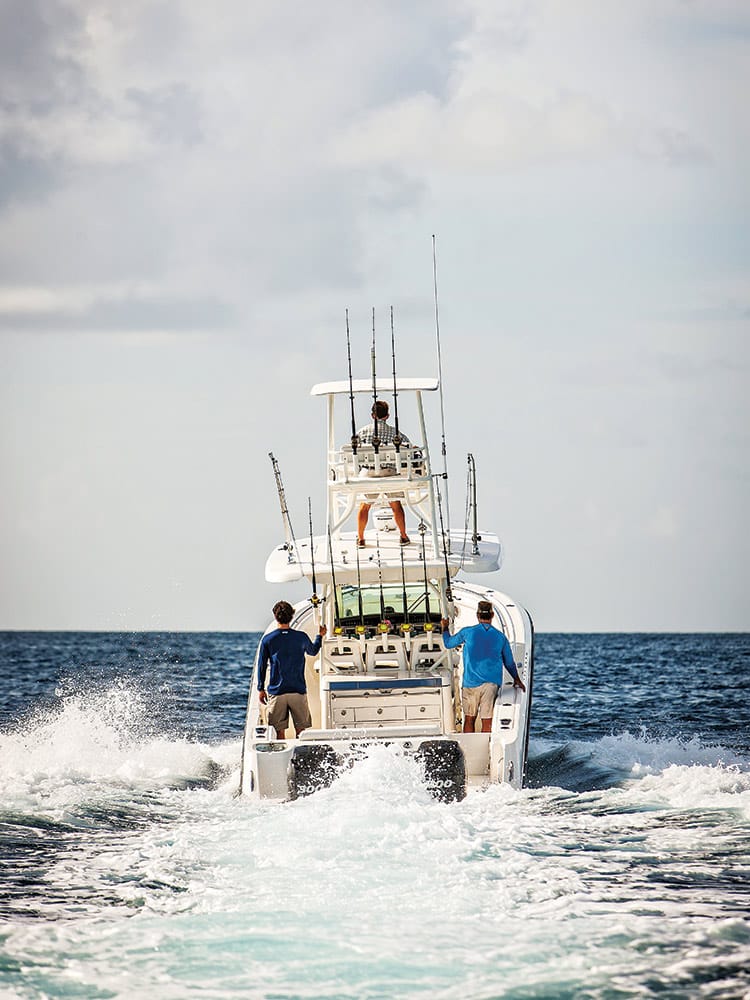
Crow’s nest. Bucket. Tower. By whatever name, an elevated helm station offers a huge advantage when scouting for fish. You see farther and spot distant birds, weed lines and breaking fish more easily.
This is the reason you see so many towers on today’s saltwater fishing boats, from battlewagons and express cruisers to center consoles, including many bay boats. However, in the not-so-distant past, piloting the boat from a tower sometimes meant you couldn’t see all your electronics functions. That’s because routing bulky cables aloft and mounting multiple displays for radar, sonar, chart plotting and autopilot often proved difficult, cumbersome and costly. And there’s just not enough room on a cramped tower helm for three or four separate displays.
Fortunately, all that has changed thanks to the development of compact multifunction displays with digital networking capabilities that let you view and control a host of functions on just one touchscreen. NMEA 2000 network cables are also thinner, and you often don’t need more than one or two. That simplifies the rigging process for electronics in a tower station.
If you are contemplating the installation of electronics on a boat with a tower, here are key elements to keep in mind.
“A multifunction display in the tower might also eliminate the need for engine instrumentation in this second station.”
Network News
A network of compatible multifunction displays offers the best solution if you are thinking about a second station, be it aloft or anywhere else on the boat. When properly installed, this allows you to access functions — autopilot, chart plotter, fish finder, radar and other information — from any display.
To help ensure compatibility across the NMEA 2000 network, it also makes sense to use the same brand of electronics throughout the boat, not only for your multifunction displays but also for all black-box functions. If, for example, you already have one or more Brand A multifunction displays at the main helm, along with Brand A peripherals, stay with Brand A for the tower station.
A multifunction display in the tower might also eliminate the need for engine instrumentation in this second station. For example, new outboard motors are NMEA 2000 compliant, allowing you to network motors with multifunction displays to access information such as rpm, fuel consumption, engine temperature and more.
Some engine manufacturers now also offer multifunction displays. For example, Yamaha Marine’s new CL7 touchscreen 7-inch engine display offers full network compatibility between Yamaha outboard systems and Garmin screens, sensors, sonar, radar, autopilot and Fusion-Link, making it a great choice for tower stations.
Mercury Marine’s new VesselView 703 touchscreen 7-inch display lets you monitor up to four engines, and it seamlessly networks with a wide range of Simrad displays and systems, making it well-suited for tower applications. The 703 also offers an integrated dual-channel chirp sonar.
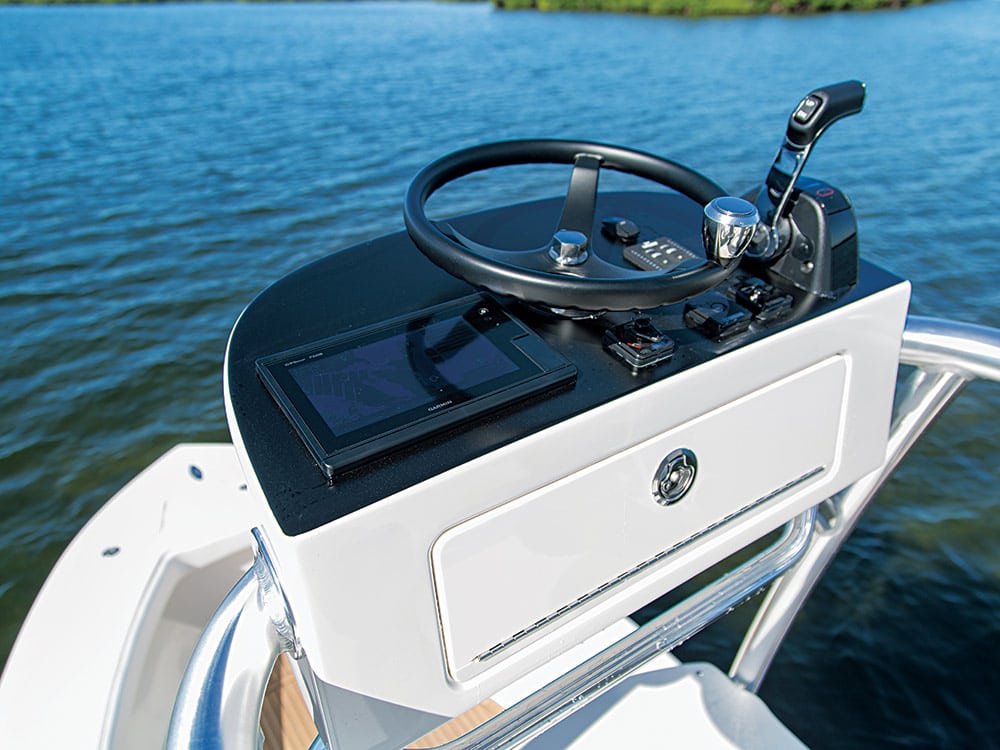
Size Matters
Multifunction displays come in sizes up to 16 inches or more, but most tower stations don’t offer a lot of room for electronics. Consequently, most are fitted with a single display from 5 to 9 inches. On larger stations, you might be able to fit a display as large as 12 inches.
The larger the screen, the better you will be able to view the information, especially in split-screen mode. That’s important when you are in the tower, which is subject to exaggerated movement from the pitch and roll of the boat. So choose the largest display that will fit in the tower.
Daylight Time
Since tower stations are often plagued by sun glare from above, be sure to select a multifunction display that offers the best possible daylight viewability. The new SolarMax screens on Simrad’s NSS evo3 series and the screen on Raymarine’s Axion 12, for example, feature IPS (in-plane switching) technology for top-of-the-line daylight viewing, even with polarized sunglasses.
To enhance viewing even more, add a buggy top to your tower station to help shade the helm. If you go this route, make sure the aluminum frame for the top is black (either powder-coated or painted). This reduces reflected glare that might interfere with your ability to easily see the information on the display.
Right Angle
If you choose to flush- or surface-mount a display in your tower station, confirm in advance that the installation will offer the optimal viewing angle. There is little worse than having to bend down or crane your neck to read a display installed at a poor viewing angle.
Another option is bracket mounting. Most displays come standard with bracket mounts that let you mount them on a horizontal or angled surface. The brackets also give you the flexibility to tilt the display for optimal viewing.
If the limited space at the tower station forces you to mount the display off center, one solution is to use a swivel base such as the Johnny Ray JR-500 (about $20). You can also use a PowerPod from Ocean Equipment (about $300 for the PP4400 for 7-inch displays). Both of these products let you rotate the display to face you for optimal viewing while in the tower.
Cover Up
Bracket-mounted displays can be removed and stowed securely between trips. But if you flush- or surface-mount one or more electronics displays in the tower, use a sun cover to protect them from UV light, dust, moisture and bird droppings while the boat is at the dock or on the trailer. Most multifunction displays come with sun covers that snap on and off.
For even more protection, consider a marine canvas cover for the tower station. This helps preserve the finish of your dash and keep the upholstery looking good longer, as well as shields the tower display from the elements.
Multifunction Display Models Good for Towers
Here are examples of multifunction touchscreen displays that work well in tower installations, especially when integrated with the main displays through a NMEA 2000 network.
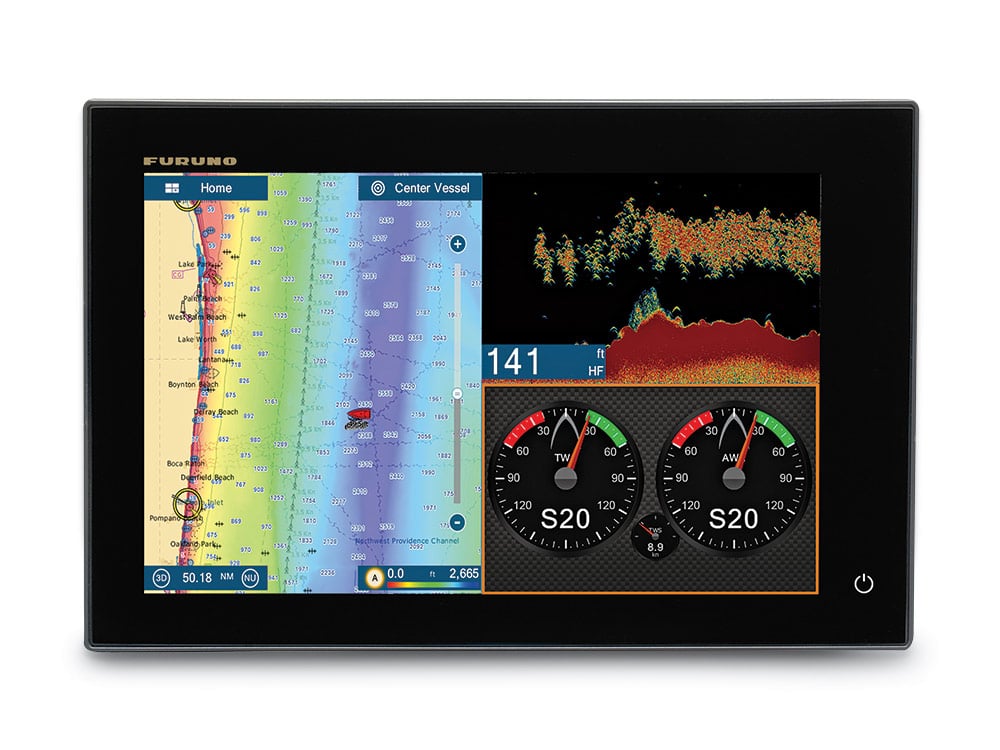
Furuno NavNet TZtouch2 12
Size: 12.1-inch
Price: $2,895
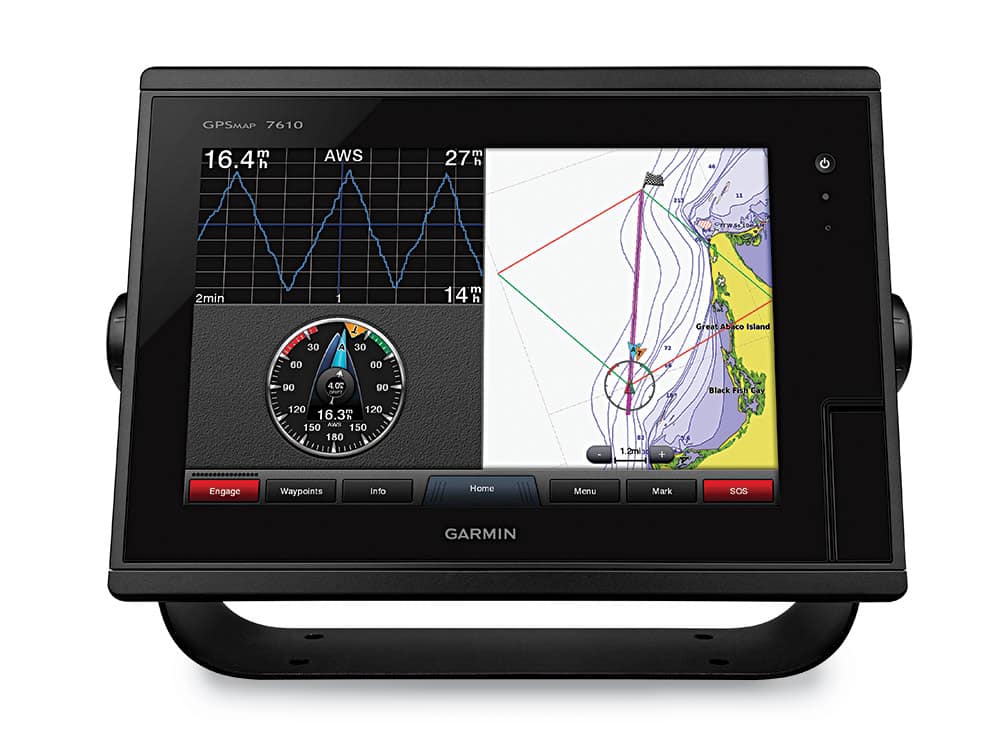
Garmin GPSMap 7610
Size: 10-inch
Price $2,499.99
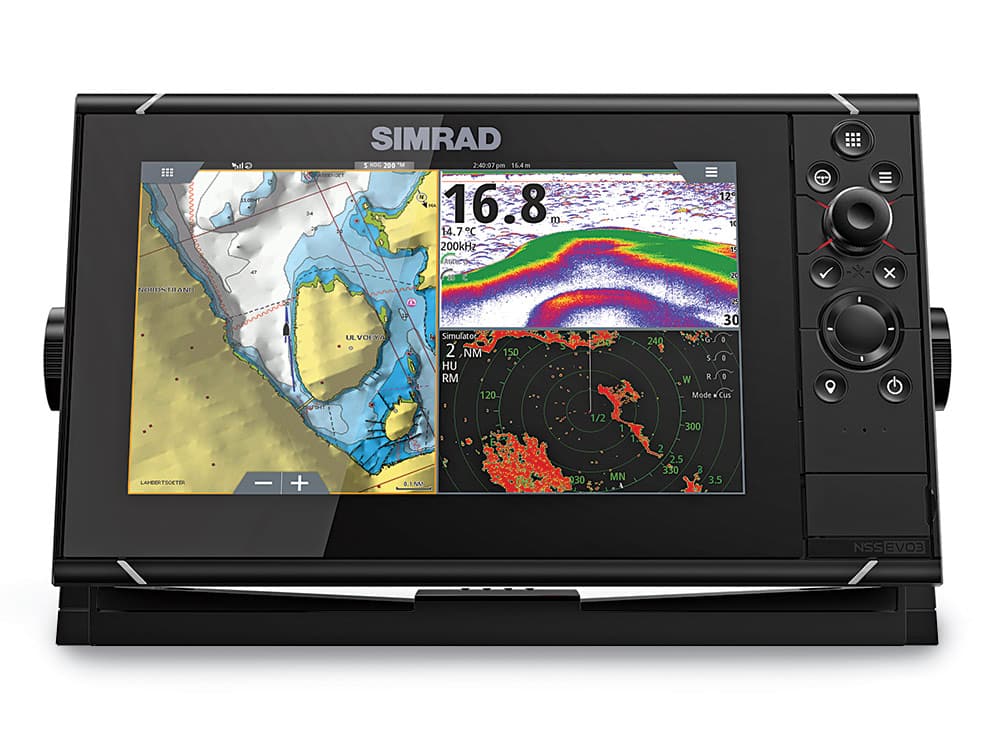
Simrad NSS7 evo3
Size: 7-inch
Price: $1,299
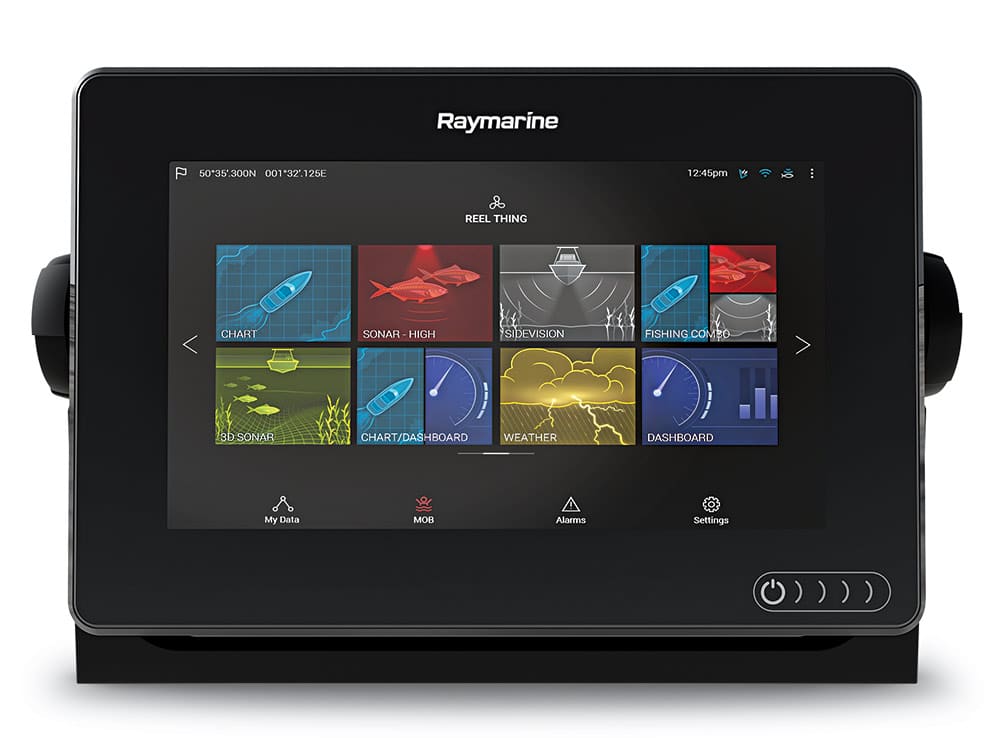
Raymarine Axiom 7
Size: 7-inch
Price: $649.99









